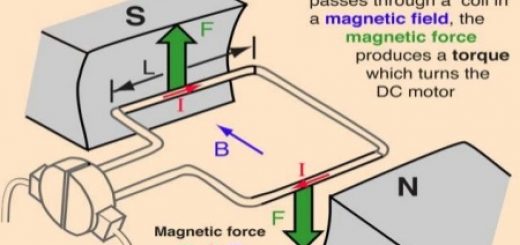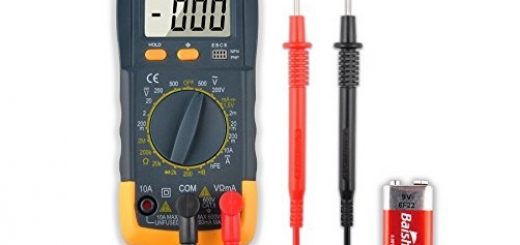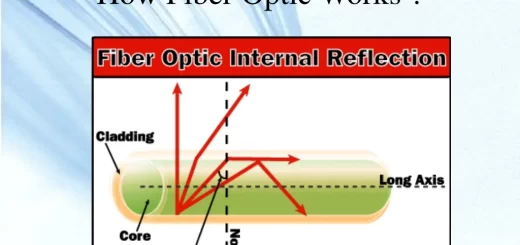Light waves properties, Analysis of white light, Spectrum colours and Light intensity
Light can travel through free space as it is electromagnetic waves that don’t need a medium to travel through, Light waves are considered as electromagnetic waves because light waves can propagate through a vacuum, The light of the Sun is a complex light because the light of the Sun consists of seven colours which are called spectrum colours.
Light waves
Light is a form of energy, and when it reflected from objects and falling on the eyes it causes vision. Light is an external factor (or stimulus) that affects the eye causing the sense of vision.
Nature of light waves
Analysis (or splitting) of white light
The sun is the main source of light energy on the Earth’s surface, Analysis of white light is the splitting of white light into seven colours called spectrum colours.
If you put a compact disc (CD), on a table, whose glistening surface faces sun rays (a source of white light). You observe the formation of seven colours. This is due to the analysis of white light into seven colours, White light consists of a mixture of seven colours which are known as “Spectrum colours“.
These colours are: Red – Orange – Yellow – Green – Blue – Indigo and violet, Similarly, when the white light falls on a triangular glass prism, it is analysed into seven spectrum colours which are constant in speed and different in wavelength, frequency and angle of deviation.
The energy of light waves
The German scientist Max Plank proved in 1900 that the energy of light waves is composed of energy quanta known as “Photons”, The energy of the photon (E) is directly proportional to the frequency of the light wave (F), Photon energy ∝ Photon frequency. Photon energy = Constant x Photon frequency
The constant value is known as Planck’s constant. Photon energy = Planck’s constant x Photon frequency.
The energy of the photon of red light is smaller than the energy of the photon of orange light because the energy of the photon is directly proportional to the frequency. The energy of violet photons has the maximum energy in spectrum colours because it has the maximum frequency in spectrum colours. The energy of the violet photon is larger than that of blue photon because the frequency of the violet photon is more than that of the blue photon.
Real-life applications of the uses of light
Light is used in home decoration like:
- Spotlights: That illuminate artifacts,
- Ornamented lamps: That brings happiness and joy to the place.
- Stand lamps: That concentrate light for reading.
Light behavior through different media
Light transmits through different media with variable degrees. Media can be classified according to their ability to allow light to pass through, into:
- Transparent medium is the medium that permits most light to pass through, Objects can be seen clearly through transparent medium, Examples: Clear glass, Air, and pure water.
- A translucent (semi-transparent) medium is a medium that permits only a part of the light to pass through and absorbs the remaining part. Objects can be seen through a translucent medium less clearly than the transparent one. Examples: Frosted (flint) glass, and Tissue paper.
- Opaque medium is the medium that doesn’t permit light to pass through, Objects can’t be seen through the opaque medium. Examples: Plant leaves, Books, Foil paper, Wood, Milk, Metals, Carton, Human skin, and black honey.
If you increase the thickness of the transparent medium, the quantity of light that passes through it decreases. The clothes pins can be seen clearly before and after placing them in a transparent plastic bag because both air and transparent plastic bag are transparent media, which allow light to pass through them.
When we put the crayons in desk trim made of flint glass, the upper part of it is visible, while the bottom does not look as clear. The upper part of crayons is visible because the air is a transparent medium, which allows light to pass through it, while the bottom doesn’t look as clear, because the flint glass is a translucent medium, which permits only a part of the light to pass through and absorbs the remaining part.
When a free leaf is placed on the title of the book we cannot see it because the tree leaf is an opaque medium that doesn’t permit light to pass through it. You can’t see the impurities that may found (exist) in black honey (molasses) because black honey is an opaque medium that doesn’t permit light to pass through it.
Although water is a transparent medium, we cannot see fish at the bottom of the River Nile because the thickness of water at that point (the bottom) is large enough to prevent light from passing through. Carton is an opaque medium because it doesn’t permit light to pass through and objects can’t be seen inside it.
When several transparent plastic strips are put on a sheet of graph paper “for the clearness of visibility”. clearness of visibility of the sheet of graph paper decreases gradually until it can’t be seen, according to the number of the transparent plastic strips and its thickness, when they increase the quantity of light that passes through them decreases.
Objects can be seen clearly through transparent media because transparent media permit most light to pass through. Clear glass is a transparent medium because clear glass permits most light to pass through and objects can be seen clearly through it. Although water is a transparent medium, we can’t see fish at the bottom of the River Nile because the thickness of water at that point (the bottom) is large enough to prevent light to pass through.
Objects can’t be seen clearly through the frosted glass because frosted glass is a translucent medium that permits only a part of the light to pass through and absorbs the remaining part. A tissue paper is a translucent medium because tissue paper permits only a part of the light to pass through and we can see objects through it less clearly.
Light travels in straight lines
Light propagates (travels) through transparent media in straight lines whose thickness can be controlled, Solar and lunar eclipses can be explained according to the travelling of light in straight lines.
Light intensity (brightness)
The light emitted from a light source propagates in all directions and as the distance between the wall and the light source increases, the quantity of light incident on the unit area of the surface decreases. Light intensity is the quantity of light falling perpendicular to a unit area of a surface in one second. The light intensity of a surface decreases as the distance between the surface and the light source increases.
Inverse-square law of light: The light intensity of a surface is inversely proportional to the square of the distance between the surface and the source of light. Light intensity ∝ 1/d².
When the distance between the light source and a certain surface is doubled, The light intensity decreases to a quarter. When the distance between the light source and a certain surface decreases to half, The light intensity increases to four times.
The intensity of light increases four times when the distance between the light source and the wall decreases to its half value because the light intensity is inversely proportional to the square of the distance between them.
The intensity of light on a surface decreases to its quarter as the distance between the surface and the light source is doubled because the intensity of light is inversely proportional to the square of the distance between the surface and the light source.
Light refraction effects, Law of light refraction, Mirage and Apparent positions of objects
Sound intensity, Factors affecting Sound intensity and Applications of ultrasonic waves
Types of motion, Relative motion, Applications of Mechanical waves and Electromagnetic waves
Role of waves in transferring energy, Wave Motion, Transverse waves and Longitudinal waves
Types & Laws of light reflection, Regular and Irregular reflection of light



